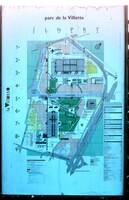- England
- Scotland
- France
- Holland
- Germany
- Italy
- Spain
- Portugal
- USA
- China
- Japan
- India
- Iran
- Advice
- Gardens
- England
- Scotland
- France
- Holland
- Germany
- Italy
- Spain
- Portugal
- USA
- China
- Japan
- India
- Iran
- Advice
- Garden Tours
Book: Landscape Planning and Environmental Impact Design: from EIA to EID
Chapter: Chapter 3 Context sensitive design theory
Applied to architecture, deconstruction can be used as an argument for the irrelevance of context. Deconstruction, as discussed in Chapter 1, began as a way of reading philosophical texts to uncover hidden structures and contradictions. It can be used to explore relationships between development projects and contexts. Noting that form is privileged over function, in architecture, Jacques Derrida has favoured a deconstruction of the relationship. Taking up this idea at Parc de la Villette, Bernard Tschumi designed the buildings and the spaces before planning their function. Some architects have welcomed this notion as an argument for liberating architecture from the several tyrannies of functionalism, historicism, environmentalism, traditionalism and contextualism. If deconstruction is interpreted in this way, it may wreck a new terror on the built environment. "Il n'a pas de hors texte", they proclaim. "There is nothing outside the text" and there is nothing outside the building. Deconstructivist buildings are designed to overcome the tyranny of context. Grids are fragmented. Horizontals are upset. Colours clash with their surroundings. The shapes and forms of revolutionary Russian constructivism are let loose on western cities. This approach would welcome the Australian with open arms.
